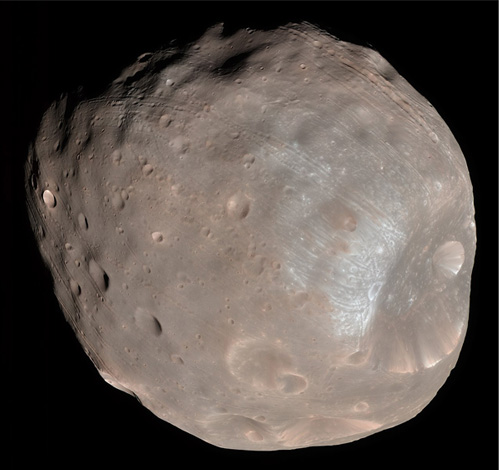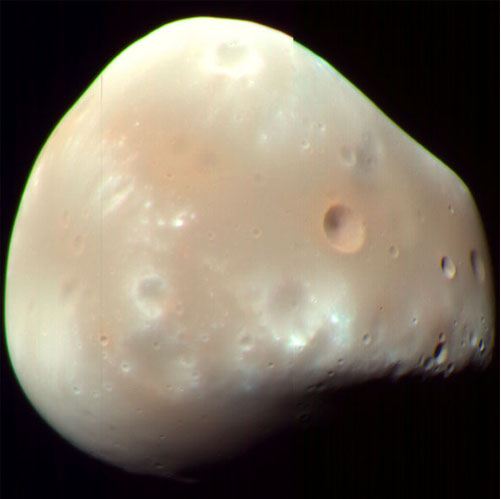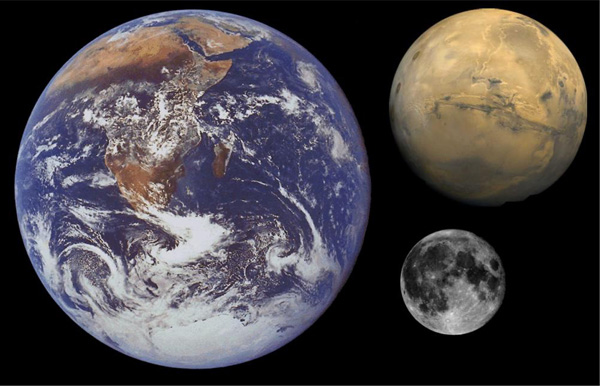Moons of Mars

Phobos | Color image of Phobos, imaged by the Mars Reconnaissance Orbiter on 23 March 2008.
It was taken from a distance of about 6,800 kilometers (about 4,200 miles). Image credit NASA / JPL-Caltech / University of Arizona |
Phobos has a mean radius of 11 km and is seven times as massive as the outer moon, Deimos.
"Phobos orbits 6,000 km (3,700 mi) from the Martian surface, closer to its primary body than any other known planetary moon. It is so close that it orbits Mars much faster than Mars rotates, and completes an orbit in just 7 hours and 39 minutes. As a result, from the surface of Mars it appears to rise in the west, move across the sky in 4 hours and 15 minutes or less, and set in the east, twice each Martian day."(from Wikipedia)

Deimos | Color-enhanced image of Deimos, a moon of Mars, captured by the HiRISE instrument on the Mars Reconnaissance Orbiter on 21 Feb 2009. |
The small rocky moons of Mars, Deimos and Phobos, are irregular in shape and comparable in size to the asteroid Gaspra. The three objects are shown at the same scale and almost the same lighting conditions in the image linked below. All three bodies have irregular shapes, testament to their violent histories. Their surfaces are distinctly different, most likely because of very different impact histories.
|
Index
Solar System Illustration
Solar System Concepts |




